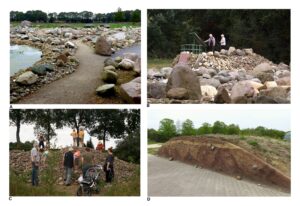The Fossil Forest of the Aragoncillo Range is one of several paleontological sites of exceptional scientific value in the Sierra de Selas (Province of Guadalajara, central Spain). This shows an accumulation of silicified tree trunks along with well-preserved macro- and microflora of lower Permian age. This ancient forest, dominated by tree ferns and conifers, was […]
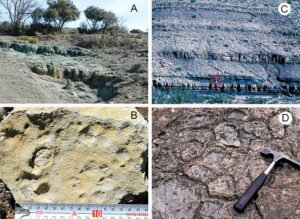
The Sobrarbe-Pirineos UNESCO Global Geopark, located in the Central Pyrenees, is a region of remarkable geodiversity that includes extensive Eocene fossil-bearing sites and constitutes an important archive of paleobiodiversity. The Sobrarbe-Pirineos Geopark hosts outcrops of Eocene formations bearing an unusual abundance and diversity of fossils from marine and continental sedimentary environments, making the Sobrarbe-Pirineos Geopark […]
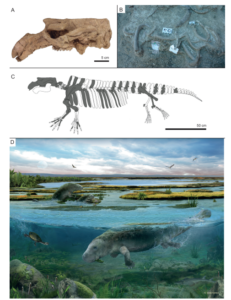
The “phosphatières du Quercy” are karstic fillings exploited for phosphate at the end of the 19th century. They yield countless continental fossils through some 30 million years, ranging from late early Eocene to early Miocene. This exceptional paleontological series documents the ‘Grande Coupure’, a major biogeographical event involving a profound renewal of vertebrate faunas, recorded […]
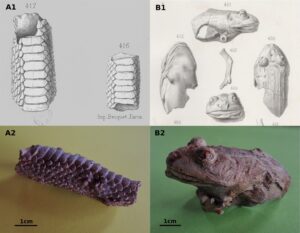
Some of the most interesting paleontological heritage of the Liguria Region is in the Beigua UNESCO Global Geopark, in Savona Province. The Geopark is characterized by high geodiversity and strong tourist traffic, being easily accessible and already having geological and paleontological visitor centers. The geosites of Stella Santa Giustina (SSG) and Maddalena–Ponte Prina (MPP) are […]
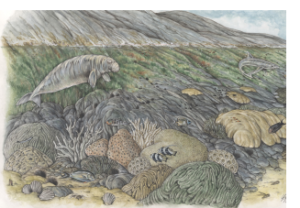
The Luberon early Oligocene fossil Lagerstätte yields exquisitely well-preserved fossils as testified by the remains of articulated skeletons, skin outlines, feathers and original pigmentation patterns. The fossils include plants, insects, amphibians, reptiles, birds and mammals from ancient lacustrine-terrestrial ecosystems of the early Oligocene. The fossil birds are especially important, including one of the most complete specimens […]
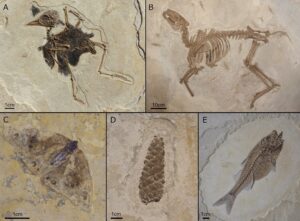
Trace fossils represent an important component of the Earth’s heritage that provide important keys for learning about the diversity and evolution of life and environments through time. They represent a rich and fragile geoheritage that requires special geoconservation measures. The Saignon tracksite, yielding thousands of tracks attributed to mammals, is located in the heart of […]
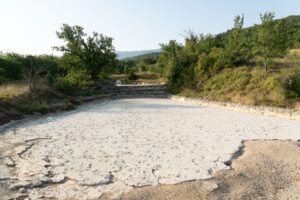
The transnational Novohrad-Nógrád Geopark situated in Northern Hungary and Southern Slovakia has several important Neogene fossil sites developed for geotourism. One of them is the lower Miocene paleontological locality complex at Ipolytarnóc , which has been well known since the middle of the 19th century. The site is the main geotouristic gateway to the geopark, […]
Neogene sedimentary rocks cover extensive areas of the Cabo de Gata-Níjar UNESCO Global Geopark (Almería, SE Spain) although most of the outcropping rocks are Miocene volcanics. The post-volcanic sedimentary rocks include three successive Messinian coral reef units. The lower reefs consist of coral patches of varying dimensions comprising Porites and Tarbellastraea, which grew on carbonate […]
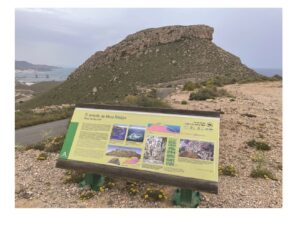
Granada Geopark, covering almost all of the Guadix-Baza basin, contains an exceptional and near-continuous fossil record of the evolution of Pliocene to middle Pleistocene land mammals (5–0.5 Ma). This period covers the endorheic (closed drainage basin) stage of this geological basin and, in this chronological framework, its record of the Quaternary period, mainly the Early […]
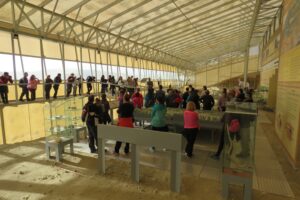
The Hondsrug UNESCO Global Geopark in the northeast of the Netherlands comprises the Hondsrug-complex, a prominent range of low till ridges created by forces of moving land ice and melt water. The unusual orientations of the ridges contrast with the usual direction of ice flow, and they are separated from each other by elongate depressions. […]
